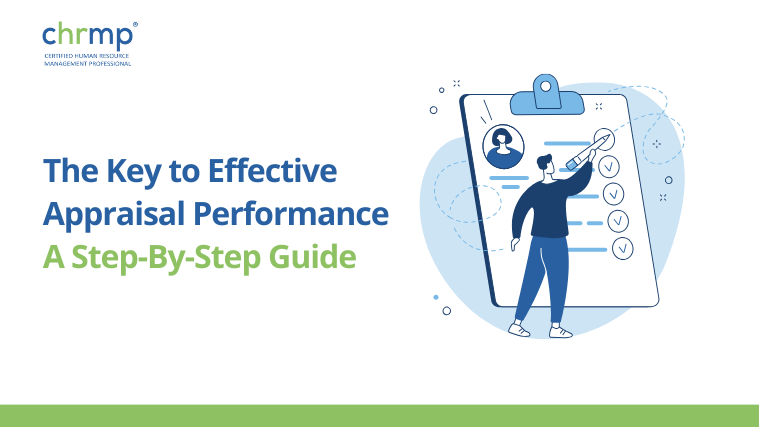

Four level model for evaluation of training effectiveness was introduced by Donald Kirkpatrick in 1994.
Any training programs must have its effectiveness, for it to be directed towards specific business related performance outputs. It may be defined as a measure that examines the degree of improvement in the knowledge, skill and behaviour of participants.Improved efficiency, higher outputs and better work-environment, along with higher return on investment (R.O.I) are some of the distinct benefits.
Impact of training
Employee training program is vital for improvement , through employee training can be effective in improving job performance, but it must be well designed and implemented. It should also be evaluated to determine its effectiveness.
Effective training can be conducted through the four levels of evaluation:
Pre-test
Post-test
Mid-term test
Follow up
Evaluating the effectiveness of training programs requires a systematic approach that includes an objective assessment of learning outcomes. JPE is one such method of assessing the effectiveness of training programs.
Evaluation of Training Programs , There are three main types of evaluation:
1. Programmatic Evaluation
2. Process Evaluation
3. Outcome Evaluation
Job performance evaluation is a structured process used to evaluate the effectiveness of training programs. This process involves measuring changes in knowledge, skills, attitudes, behaviors, or other important aspects of employees’ work after they have undergone training.
Evaluation model
Job Performance Evaluation
Process Assessment Tool
Post training Survey
Pre/post survey
An attempt has been made here to describe in brief, four levels of evaluation of training. It may help you in knowing the salient points of the same, without need to go through huge amount of literature available on the subject.
The four levels of training evaluation by Donald Kirkpatrick model for evaluation are given as below
Reaction: The degree to which participants find the training favourable, engaging and relevant to their jobs
Learning: The degree of acquiring of intended knowledge, attitude, confidence and commitment after the training, by the participant.
Behaviour: The degree of application of the acquired skill sets during training, when they are back on the job
Results: The degree of the impact of the training on the bottom line of the organization
It is to be noted here that based on needs of your organisation, you may decide whether to evaluate all the four levels or any one of the above.
A survey was conducted and it was found out that maximum number of organisations preferred to evaluate reaction, followed by learning, behaviour and results in the decreasing order.
Learning Experience Instructors may also ask questions about the trainee’s experiences with the skills taught in the sessions. These answers can help instructors determine whether the trainees understood the concepts presented in the training sessions.
learning objectives , and the importance of acquiring the skills taught during the training sessions. Trainees are also asked to indicate how well the trainer prepared the course material, as well as the clarity of the presentation materials used during the training sessions.
Let us discuss the four levels :
Level 1 of knowing the reactions or feedback of participants is a very vital.It is the first step in assessing the success of the training program. The reactions or feedback may help you to determine the effectiveness of the program and improving it further.
However, level 1 evaluation suffers from the following disadvantages
Owing to the above, one school of thought is that level 1 evaluation is not so useful, as it concentrates on the “fun-part” experienced by participants.However, the author is of the opinion that if participants do not enjoy or like the training, how they will implement it after going to work.
Employee training program can make a difference in the performance of employees . Evaluations can help measure the performance . This kind of evaluation is usually done at regular intervals during the course of an employee’s employment.
For example, when a company has hired someone as a new hire, this is the first time the person performs his Employee training program is an important indicator of the effectiveness of a training program. Job performance can be measured in several ways, including:
A comparison of employee skills and knowledge to those required by the job.
An evaluation of the level of skill attainment of employees compared to that expected of them based on their education or experience.
Effective training can also be evaluated through observation of the employee’s work behavior. The following are some examples of effective training programs:
• A training program with a strong focus on learning how to apply new acquired knowledge and skills.
• A training program that provides opportunities for employees to practice what they have learned.
• An effective training program will provide
Job performance would improve if employees were able to perform their jobs more effectively.
Training should lead to improved productivity and efficiency.
The following section discusses four levels of evaluation of training effectiveness.
Level 1 – Employee Performance Improvement
This is the most basic form of evaluation. It involves comparing the actual performance of employees against the standards set out in the job
If there is a significant difference between the two, then the training program needs to be revised.
Level 2 – Skill Acquisition/Skill Development
In addition to evaluating the performance of employees, this type of evaluation evaluates whether the training provided was successful in helping employees acquire the skills necessary to perform their jobs. To do so, the instructor must evaluate the extent to which the trainees demonstrated mastery of the skills taught in the training sessions. This evaluation requires a combination of both objective and subjective measures.
In general, training programs that are designed to teach specific skills have better success rates than programs that attempt to cover all aspects of a job in one session.
Objective Measures
These include tests, quizzes, and exams administered before and after the training session. If these assessments show improvement in the trainees’ ability to use the skills they have been trained in, the instructor can conclude that the training program was successful.
In Level 1 evaluation, designing the feedback forms is the first step. It may include the reactions of participants with respect to the following
(a) content of the training,
(b) material given,
(c) instructional methods used,
(d) the energy level and or overall impact of the trainer during the training, and the total ambiance or environment.
The participants may also be asked to chart out their own recommendations, for improving the program further.
Donald Kirkpatrick defines learning as the extent to which participants improve knowledge and or increase skill and a change occurs in their attitude or “behaviour”.
Measuring knowledge or skill acquired during training program is easier than to devise a way to find out if their opinions, attitudes or behaviours changed after the intervention.
Thus, level 2 evaluation is used to measure whether learning has truly occurred. Some examples of such evaluations are academic sessions, workshops on specific skill sets, training courses or seminars.
The best way for doing level 2 evaluation is to conduct pre-and past tests. These tests should be given before and after the training event. They help us to know the knowledge or skill of the learner before and after the planned event. It may be done by any of the following methods.
As per D. Kirkpatrick, level 3 measures the degree to which participants behaviour change as a result of the training-basically whether the knowledge and skills from the training are then applied on the job. Level 3 evaluation involves both pre and post event measurement of the learner’s behaviour.
It is really unfortunate that most organisations tend to ignore level 3 evaluation, owing it to be time consuming and costly. It also requires good organisational and follow-up skills and processes.
In spite of this, level 3 evaluation is having the following distinct advantages
The best course of action is to prepare the participants mentally and psychologically that they will be subjected to level 3 evaluations and what it may contain. This will increase their seriousness during the event. Subsequent follow-up actions must also be shared with them.
If anything goes wrong during the actual training, it should be ascertained on-spot from the learners and remedial action taken.
Level 3 evaluation may be carried out by
Level 4 evaluation deals with the measurement of real organisational impact.
It helps in knowing if your training program is having a positive impact on the relevant key performance indices (KPIs) and is helping move your company towards its business goals. In order to do it, you have to clearly identify the goals, KPIs and data sources etc. pertaining to your organisation.
Level 4 evaluation is costly and time – consuming. It may be a difficult proposition in view of many inter-dependent and difficult to measure variables. However, with due diligence and effort, the following terms, which may be measured are: ROI, indirect and direct costs, overhead costs, development costs and many more.
Training experience is often evaluated by analyzing the data collected from training sessions. For example, an instructor might want to know how many times he or she has conducted a particular training session, what kind of response his or her trainees have given when asked to participate in the training, and how satisfied the trainees were with the training session.
Training objectives , such as increasing employee productivity, reducing turnover, meeting legal requirements, and improving customer service, can be measured in terms of the changes in behavior that occur as a result of the training.
Training Process Evaluation , The process of conducting a training session involves planning, organizing, delivering, observing, and documenting the session. It is important for trainers to carefully plan the content of each session and make sure the session covers the topics needed to achieve the goals of the training.
Trainer Preparation
After planning the session, the next step is to prepare the trainer. A trainer should review the session outline
Recently, there has been mention of a fifth level of evaluation of training effectiveness, ROI. But some experts opine that it is actually level 4 evaluation only, as suggested by Kirkpatrick. Also, training effectiveness has been evaluated using HR analytics. With increased role of technology in HR, the day is not far when the training effectiveness-evaluation will be a reality, for fourth level evaluation also.
Ripples Learning has developed a new software for level 3 evaluation of training over an extended period from 3 months to one year, you may know its details on.
For knowing more about us, please log on to the following websites:

Grab Your 25 Free Email Templates Now